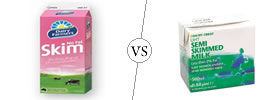Difference between Otter and Seal
Key difference: Seals are typically known for their sleek and sleek-bodied bodies with short, wide, flat flippers. Unlike the seals, otters have long, slim bodies with relatively short limbs. They also have webbed paws with sharp claws, unlike the fins on seals. Otters have very soft, insulated underfur, which is protected by an outer layer of long guard hair.

Seals are not related to the otters at all, even though many believe them to be interrelated. “Seals” is actually a generalized name for all pinnipeds. Pinnipeds are a widely distributed and diverse group of fin-footed semiaquatic marine mammals. Pinnipeds are further distributed into the Odobenidae family, which is the walrus; the Otariidae family, which includes eared seals, sea lions, and fur seals; and the Phocidae family, which is the earless seals. Each of these families is further distributed into sub-families and species.
Seals are typically known for their sleek and sleek-bodied bodies with short, wide, flat flippers. Their bodies are well adapted to the aquatic habitat, as they tend to spend most of their lives in water; only coming out on to rocks, ledges and the beach to sun bathe. Seals have thick skin with blubber underneath; however fur seals have both blubber and a specially adapted fur coat. The fur coat includes outer guard hairs that repel water and a layer of insulating underfur.

Unlike the seals, otters have long, slim bodies with relatively short limbs. They also have webbed paws with sharp claws, unlike the fins on seals. Otters have very soft, insulated underfur, which is protected by an outer layer of long guard hair. This traps a layer of air, and keeps them dry and warm under water.
Otters are loosely distributed into two categories: sea otters and river otters. As their name suggests, sea otters live mainly near the sea, spending most of their time in the water. River otters live near rivers and other sources of fresh water. River otters also have long, muscular tails unlike their sea counterparts.
An otter is any of the 13 living species of semiaquatic or aquatic mammals. They are the smallest mammals in the sea. They are part of the Lutrinae subfamily which is a part of the family Mustelidae that includes weasels, badgers, wolverines, and polecats. Hence, otters are closely related to these creatures.
A detailed comparison between otters and seals:
|
|
Otter |
Seal |
|
Scientific classification |
Animalia – Chordata – Vertebrata – Mammalia – Carnivora – Mustelidae – Lutrinae |
Animalia – Chordata – Vertebrata – Mammalia – Carnivora – Caniformia – Pinnipedia |
|
Species |
13 living species of semiaquatic or aquatic mammals |
Pinnipeds, also known as fin-footed mammals are often generalized as seals. Pinnipeds include the walrus, eared seals, sea lions, fur seals and earless seals. |
|
Characteristics |
Otters have long, slim bodies and relatively short limbs, with webbed paws. Most have sharp claws on their feet, and all except the sea otter have long, muscular tails. They have very soft, insulated underfur, which is protected by an outer layer of long guard hair. This traps a layer of air, and keeps them dry and warm under water. They have very high metabolic rates to help keep them warm. |
Pinnipeds are typically sleek-bodied and barrel-shaped. Their bodies are well adapted to the aquatic habitat where they spend most of their lives. Their limbs consist of short, wide, flat flippers. Fur seals have both blubber and a specially adapted fur coat, including outer guard hairs that repel water and a layer of insulating underfur. For this reason they were particularly prized by sealers. Many species were nearly hunted to extinction. |
|
Diet |
Fish and shellfish, and other invertebrates, amphibians, birds and small mammals. European otters must eat 15% of their body weight a day, and sea otters 20 to 25%, depending on the temperature. |
Pinnipeds are carnivorous, eating fish, shellfish, squid, penguins, and other marine creatures. Some seals eat warm-blooded prey, including other seals. |
|
Age |
Up to 16 years |
15 to 40 years depending on the species |
|
Gestation |
60 to 86 days |
About 9 to 12 months depending on the species |
|
Reproduction |
The newborn pup is taken care of by the mother, the father, and all the other offspring. It lives with its family for about one year, so it can learn and be kept safe until maturity. |
Males of some species aggressively defend groups of specific females, referred to as harems. Males of other species defend territories on reproductive rookeries while females move freely between them. After the female returns from her first feeding trip, the most important task for her is to find her own pup out of the mass of other pups. Feeding a different mother's pup is a significant waste of energy, as milk production has a high parental cost. The seal overcomes this complication by voice recognition. The mother and pup must learn each other's voices in the first few days after the pup is born, before the dam goes on her next hunt. |
|
Lives |
Most species live beside water, but river otters usually enter it only to hunt or travel, otherwise spending much of their time on land to avoid their fur becoming waterlogged. Sea otters are highly aquatic and live in the ocean for most of their lives. |
Fur seals have both blubber and a specially adapted fur coat, including outer guard hairs that repel water and a layer of insulating underfur. For this reason they were particularly prized by sealers. Many species were nearly hunted to extinction. |
Image Courtesy: holtz.org, tbird1687.tripod.com









Comments
Joanna Forbes
Tue, 12/19/2017 - 10:01
Add new comment